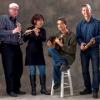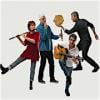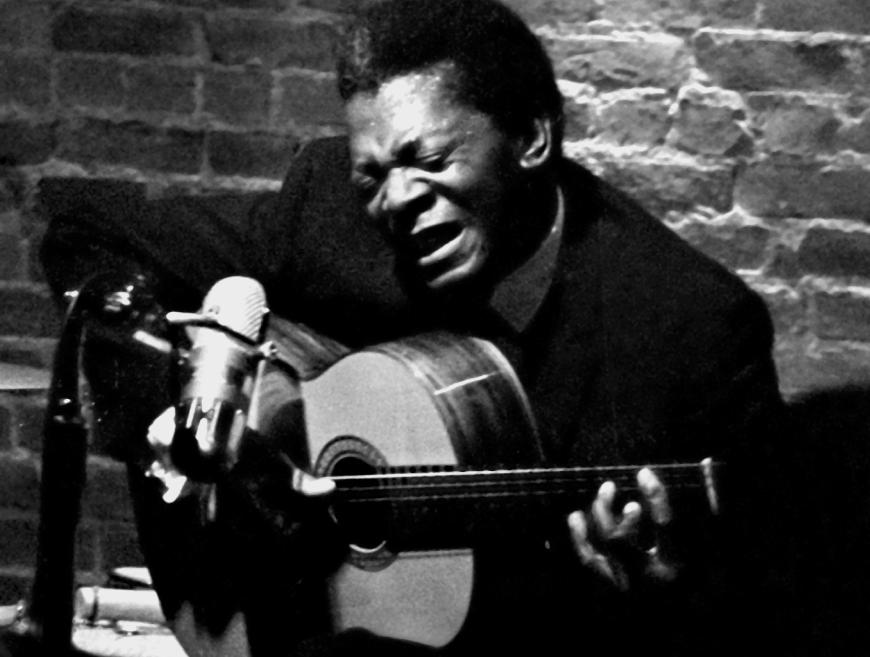
Samba in Seattle by Bola Sete is a new three-CD set recorded live between 1966–1968 at The Penthouse, the same venue that yielded the recent revelations of A Love Supreme: Live in Seattle from John Coltrane’s 1965 engagement. Released by San Francisco-based Tompkins Square Records, the project reintroduces an artist who was at the center of the multifarious Bay Area scene during its most explosively creative decade.
Too often overlooked since his death in 1987 at the age of 63, the Brazilian guitarist and composer was both utterly singular and an avatar of the heady, cosmopolitan brew that coalesced in Northern California in the 1960s. As artists collaborated in unprecedented settings and musical forms morphed upon collision, Sete added a vivifying dose of samba soul into the mix. He found audiences everywhere, from jazz joints and concert halls to rock clubs and folk festivals. In the same period when he was performing at the Penthouse, Sete headlined for Bill Graham at the Fillmore on a triple bill with Buffalo Springfield and Country Joe & The Fish.
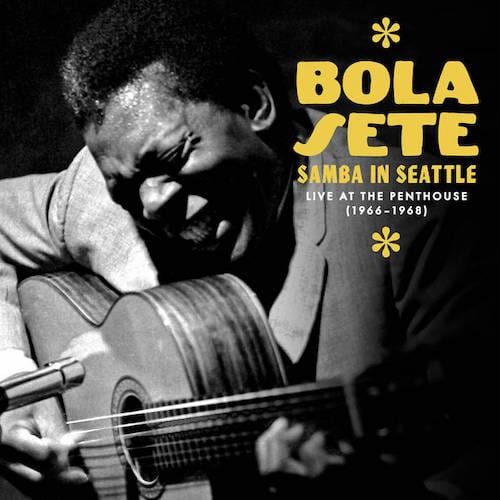
Buoyed by the international rise of bossa nova following the release of the hit 1959 film Black Orpheus, Sete’s career was never dependent on the seductive new sound. By the time he started performing at the Penthouse the vogue for bossa nova had been swept off of the American pop charts by the British Invasion and his samba jazz repertoire ranged far afield.
Captured with his working trio featuring fellow Brazilians Sebastião Neto on bass and Paulinho Magalhães on drums, the guitarist confidently interprets Jobim standards like “Meditação” and “Garota de Ipanema” (Girl from Ipanema) and saudade-steeped Baden Powell gems “Deve Ser Amor” and “Consolação.” But he also digs into Cuban composer Ernesto Lecuona’s “Malagueña,” and delivers Bach’s Partita in E Major and Spanish composer Francisco Tárrega’s “Recuerdos de la Alhambra” with verve and confidence. He’s masterly on Johnny Mandel’s “The Shadow of Your Smile” and Duke Ellington’s “Satin Doll,” and at his most exciting on originals, like “Samba Soul.” He’d spent a decade traveling around the world acquiring influences by the time the Penthouse recordings began, and Sete was a musician who contained multitudes.
“Bola was always evolving,” said his widow Anne Sete, who met the guitarist in 1965 when he moved in next door to her Sausalito apartment. “He was always absorbing, learning how the fingers worked to make those sounds, listening to how other people played. He adored American jazz. At one point, Bola took Berklee College of Music lessons by mail. He was always learning.”
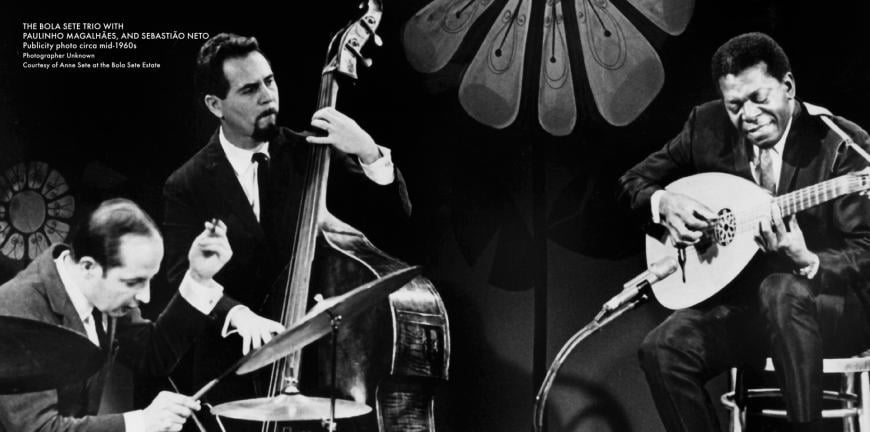
For an artist of his magnitude, Sete’s discography has often been neglected, with some of his major albums falling out of print for decades (some are still unavailable). Samba in Seattle captures him in midflight, a fully formed master who was still eager to grow. Recorded by veteran Seattle jazz disk jockey Jim Wilke, the recording quality is superb. It’s like sitting in a front row Penthouse seat.
Produced by Zev Feldman, who has become an invaluable sleuth uncovering forgotten live jazz recordings, the set includes a 40-page booklet that makes an excellent case for Sete’s vast but forgotten influence. Carlos Santana describes Sete as an essential early inspiration, while George Winston talks about their friendship and the evolution of Sete’s music in his last decade, when he recorded for the pianist’s Dancing Cat label. But it’s a searing, personal essay by the late John Fahey originally written for Guitar Player magazine that best captures the power of Sete’s performances. They struck up a mutually admiring friendship, and Fahey released Sete’s album Ocean in 1975 on his Takoma label (an album that’s currently out of print).
“That was my first exposure to Bola Sete,” said Josh Rosenthal, who’s made Tompkins Square an essential outpost for acoustic guitar mavericks like Robbie Basho, Harry Taussig, and Duck Baker. “I still feel like that’s one of the best Takoma albums, and maybe Sete’s masterpiece. I wasn’t as familiar with his more traditional Brazilian music until this project came along. What’s so fascinating is that he crossed in and out of all these different areas. You can see he was a pioneer for the whole new age scene.”
Even with his extraordinary talent, restless creativity and dogged work ethic, Sete owes the blossoming of his career to one fateful encounter. His American story starts, as is so often the case in modern jazz, with Dizzy Gillespie. In May of 1962 the trumpeter opened a three-week engagement at the Black Hawk, the Tenderloin nightclub that was nearing the end of its 15-year run as San Francisco’s premiere jazz spot. Looking to grab a bite before his show the trumpeter strolled over to the Tudor Room in the Palace Hotel, where Djama De Andrade had spent several years performing for mostly oblivious dinnertime diners.
Born in Rio de Janeiro in 1923 and raised in an Afro-Brazilian family with living memories of Africa, De Andrade acquired the nickname Bola Sete as a young man, a racial reference to the black seven ball used in snooker. Trained in European classical music, steeped in samba, and besotted with jazz artists like Nat “King” Cole and Django Reinhardt, he earned renown in Brazil as standout talent even amidst an extraordinary generation of guitarists who emerged in the booming years after World War II.
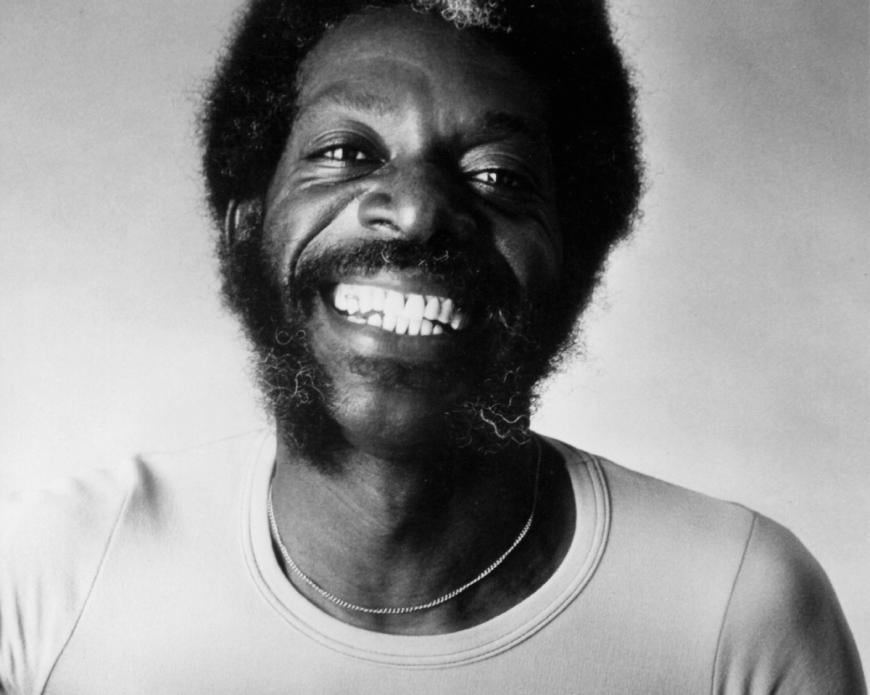
But there was more lucrative work outside the country, and Sete spent much of the 1950s performing in hotels in Italy and around Latin America. A contract with Sheraton brought him to the States where, after several years of toiling in obscurity in San Francisco, he happened to cross paths with Gillespie. They’d actually met a few years earlier in Brazil when the trumpeter was touring across South America with his big band, though the language barrier limited conversation. Recognizing Sete in the Tudor Room and duly impressed by his virtuosity and wide-ranging repertoire, Gillespie returned with his pianist, a rising Argentine composer named Lalo Schifrin, who served as an intermediary via Spanish.
Within two months, Gillespie flew Sete out to New York City for to record several bossa novas that were rapidly attaining the status of standards, including Jobim’s “Chega de Saudade” (aka “No More Blues”) and “One Note Samba,” and Luiz Bonfá’s “Manhã de Carnaval,” songs that appeared the following year on Gillespie album New Wave! (Phillips). Two months after that recording session, Gillespie showcased Sete at the 1962 Monterey Jazz Festival on a Sunday afternoon program dubbed “The Relatives of Jazz,” with Cuban conga master Francisco Aguabella, the Virgin Island Steel Band, and strangely enough, Israeli singer Yaffa Yarkoni.
It was a time when a standout performance at Monterey could launch a musician’s career, and Sete made of the most of it, landing a record deal with the Bay Area label Fantasy Records (his return to the fairgrounds in 1966 led to the popular Verve album Bola Sete at the Monterey Jazz Festival, which features many of the tunes recorded at the Penthouse). The showcase with Gillespie caught the attention of Vince Guaraldi, a rising San Francisco pianist who was also featured at the festival. His ears were primed to recognize a Brazilian master who had been present for bossa nova’s creation but wasn’t beholden to the restrained new sound.
After several years playing in vibraphonist Cal Tjader’s popular Latin jazz combo, which drew on an idiom pioneered in the late 1940s by Dizzy Gillespie, Havana-born trumpeter Mario Bauzá, and conguero Chano Pozo, Guaraldi had earned a strong local following with his own trio. Smitten with the new music from Brazil, he was one of the first American jazz artists to delve into bossa nova with Jazz Impressions of Black Orpheus, an album recorded at the public television station KQED and released by Fantasy in April 1962.
Much like Sete’s contributions were long forgotten, Guaraldi’s role as an early bossa adopter was overshadowed by the huge success of the pianist’s tune “Cast Your Fate to the Wind,” which was originally released as the B-side of a Jazz Impressions single with Bonfá’s “Samba de Orpheus.” A bona fide hit that peaked at 22 on the Billboard pop chart, “Cast Your Fate” won a Grammy Award for best jazz composition in 1963. With his career surging, Guaraldi sought out Sete, who had already recorded his Fantasy debut Bossa Nova when they started performing and recording together. The collaboration yielded three albums, two of which were reissued together on one CD, 1963’s Vince Guaraldi & Bola Sete and Friends and 1966’s Live at El Matador.
The Penthouse dates pick up just as their partnership was diverging, as Guaraldi’s success writing scores for Peanuts specials changed his trajectory. Samba in Seattle documents Sete at a daunting peak, but he scaled other heights in the following years. Saxophonist John Handy, who had his star-making turn at the Monterey Jazz Festival in 1965, incorporated Sete in a series of diverse ensembles, culminating in John Handy’s Rainbow Band. Recorded live at the Great American Music Hall in 1979 and originally broadcast on NPR’s Jazz Alive program, the group featured three of the world’s most renowned Indian classical musicians, with Carnatic violinist L. Subramaniam and the multigenerational Hindusanti tandem of sarod legend Ali Akbar Khan and tabla great Zakir Hussain. He’d traveled a long way indeed from Rio.
Correction: This article was initially published with an incorrect byline. Andrew Gilbert is the author.


